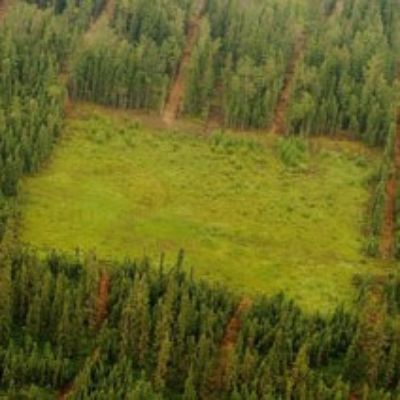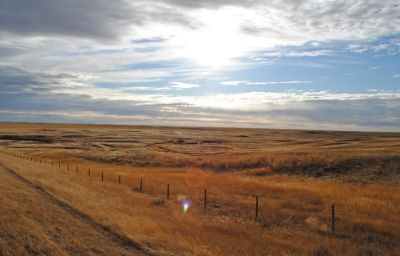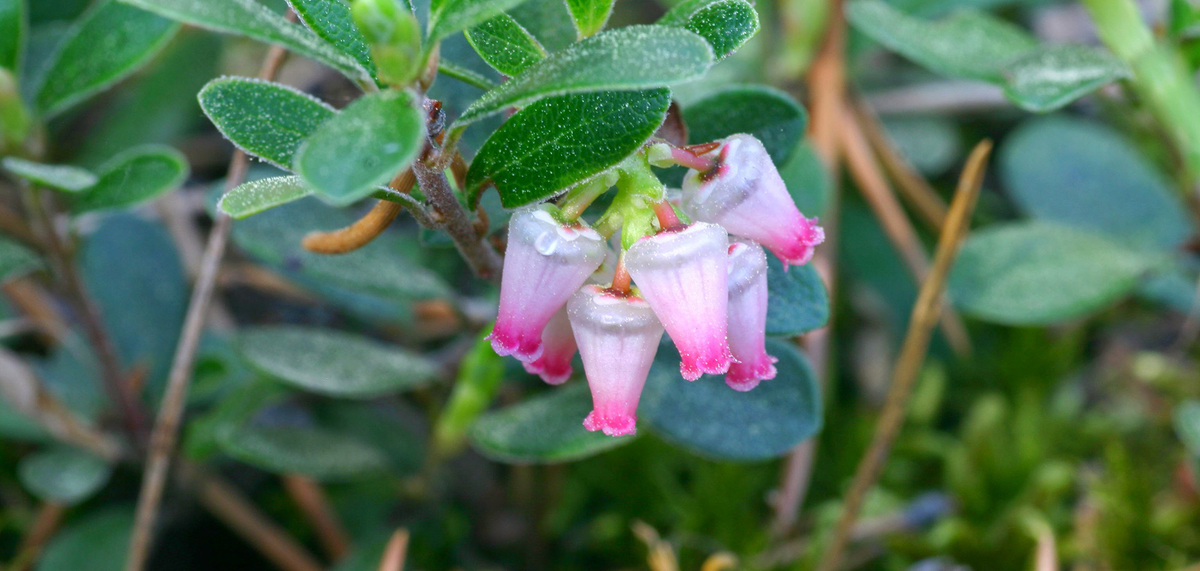
Biodiversity Trajectories: Comparing Forest Recovery after Fires and Harvest
Categories: Habitat Recovery
Status: In Progress
About the Project
The Biodiversity Trajectories (BDT) project is a multi-year, collaborative project between the ABMI and seven forestry companies in Alberta.
This applied research project supports an effort to monitor biodiversity outcomes of the ecosystem-based management (EBM) and the natural disturbance models of forestry. These approaches to forestry are based on the philosophy that by harvesting in a manner that better emulates natural disturbances such as fire, the regeneration of harvested forests—and associated biodiversity—will better converge with those affected by natural disturbances. The BDT project will help understand how EBM techniques affect biodiversity in Alberta’s regenerating boreal forest, and whether this convergence is occurring.
Data collection and analysis undertaken in this project are focused specifically on understanding how quickly and how closely biodiversity in harvested stands converge with those in burned stands.
This project is being supported by a number of forestry companies in Alberta via funding from the Forest Resource Improvement Association of Alberta (FRIAA) and through the contribution of forest industry data and expertise on harvesting and silvicultural processes. Innotech Alberta also provides fieldwork support and expertise, further strengthening the project's implementation.
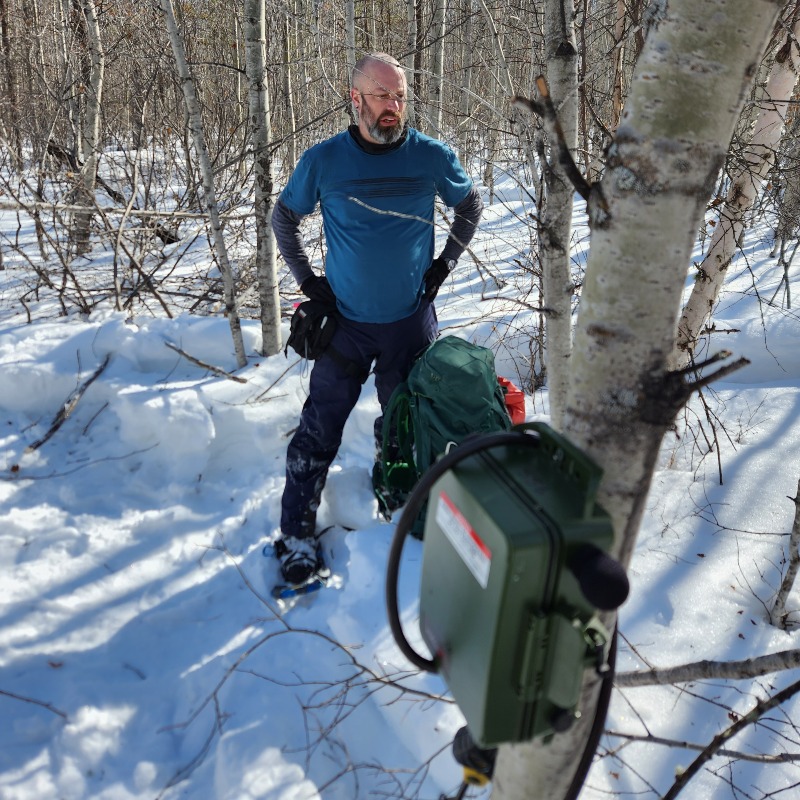
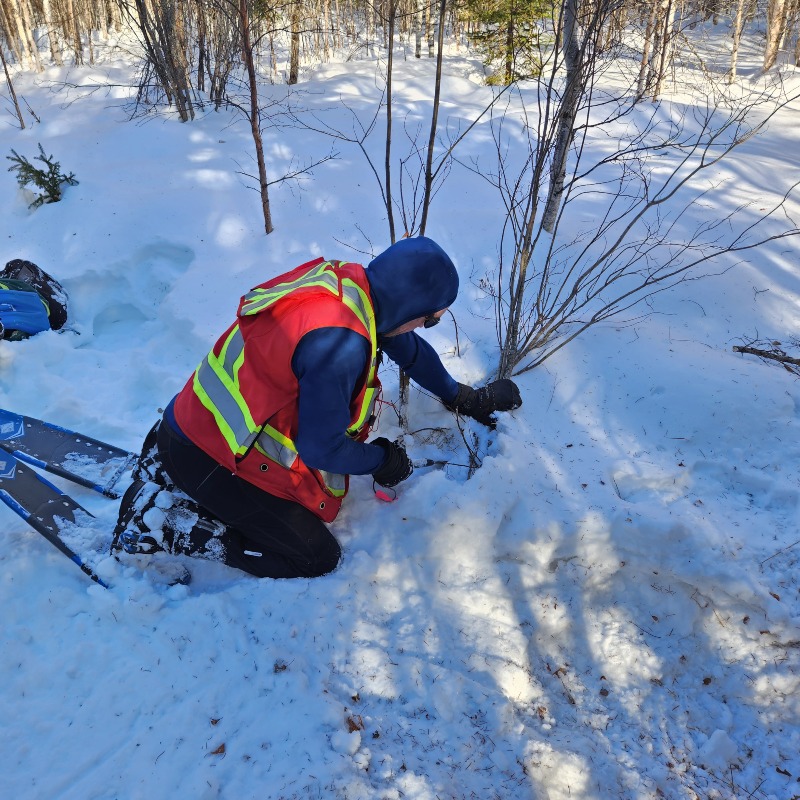
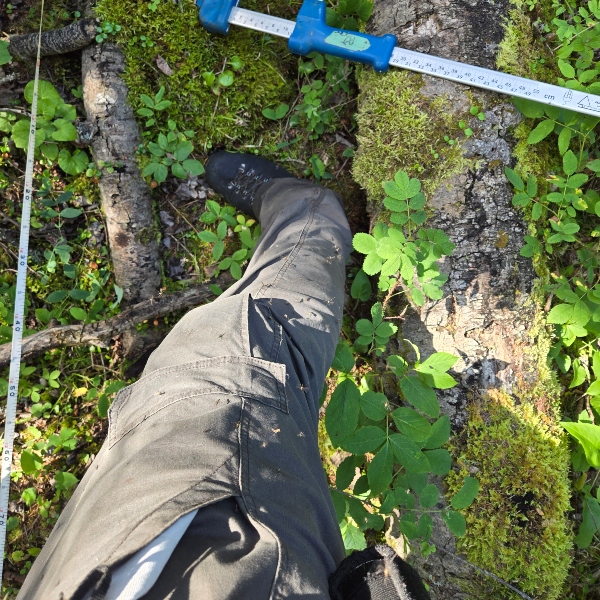
First, we compile data on fire, harvest, and silvicultural history within much of the green zone of Alberta to develop a set of maps to geographically display this information, as well as support study design and site selection for biodiversity monitoring.
Second, we conduct extensive field data collection across the Alberta green zone and subsequently analyze those data to evaluate how quickly and how well convergence between harvested stands and burned stands occurs for biodiversity and habitat elements. This builds on earlier work completed with Alberta-Pacific Forest Industries looking at convergence over shorter time periods.
Biodiversity and habitat element data will be collected in post-fire and post-harvest forest stands throughout the Boreal natural region of Alberta. We will implement ABMI’s terrestrial monitoring protocols across 90 survey sites between 2024 and 2027. At each site, we will deploy ARUs and remote cameras to monitor bird and mammal populations, respectively. Field crews will also collect vascular plant samples and record habitat information (e.g., density of stems, downed woody debris) to characterize vegetation and forest structure.
Data processing and analysis will focus on summarizing similarities in the bird, mammal, and vascular plant communities between similarly-aged post-fire and post-harvest forest stands. We will compare the communities in those stands to matched, older stands from the ABMI database, and will create detailed summaries of the age trajectories in each stand type of each analysable species, species group (e.g., “old-forest birds”), and habitat element.

photo: Marshall Mackenzie

Our first year of data collection was completed in August 2025. Preliminary data processing and analysis is planned for the fall and winter of 2025.
An important preliminary outcome of this project is the development of a fulsome understanding of the harvest, silvicultural, and fire history of much of Alberta’s green area, to support robust study design and site selection.
Currently, not a single source of information provides fire history information in adequate resolution in combination with an understanding of harvest and silvicultural history. The longer-term intent is to share these data publicly on the ABMI’s Mapping Portal.
Mapping resources of fire and harvesting history in Alberta, developed as part of this project, will be made publicly available and be useful for project planning and environmental understanding beyond this project. Analytical results will be immediately accessible to FRIAA and the respective forestry partners for consideration in their own operations. All the outcomes of this project will also be available to a broader suite of research projects to enable integration of outcomes in informing forestry practices and future research (i.e., Healthy Landscapes project led by Foothills Research Institute and the Ecosystem Management Emulating Natural Disturbance (EMEND) project and its offshoots led out of the University of Alberta).
The project is providing applied research information to help maintain biological diversity in managed forests. Understanding how forest harvest in Alberta does or does not result in biotic convergence with natural disturbance will support ongoing adaptive management to maintain biodiversity and ecosystem function.
Forest Resource Improvement Association of Alberta (FRIAA)
Main Photo: Emily Chow
This multi-year program is designed to track and quantify forest regeneration across disturbed landscapes such as seismic lines, wellsites, pipelines, cutlines, and roads, with a particular focus on Alberta’s Oil Sands Region and in caribou range.
The ABMI’s Ecological Recovery Monitoring (ERM) project assesses ecological recovery of certified reclaimed oil and gas wellsites.
Our goal is to develop essential knowledge and tools to support the management of Alberta's biodiversity in a changing climate.

